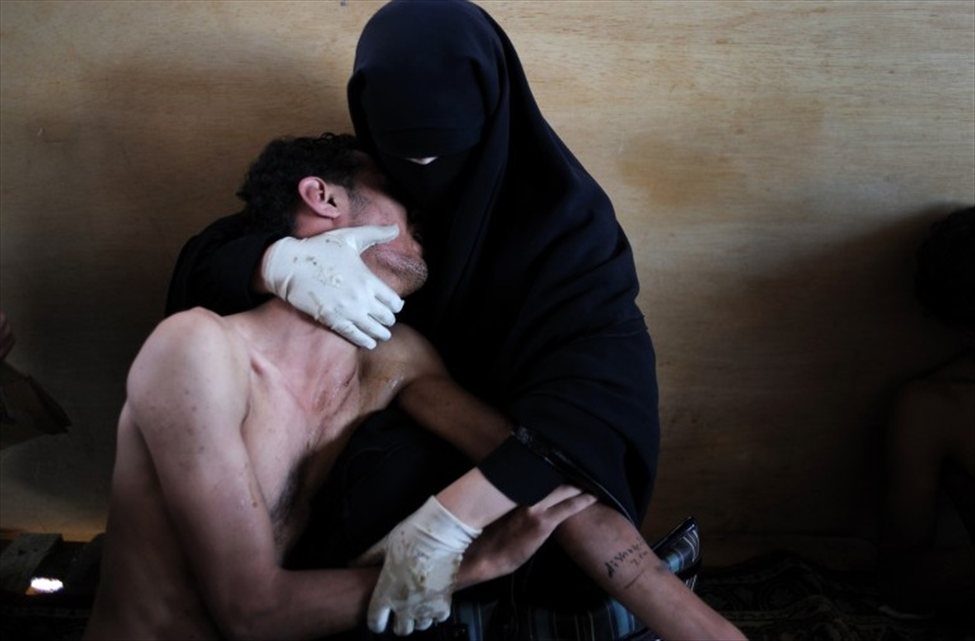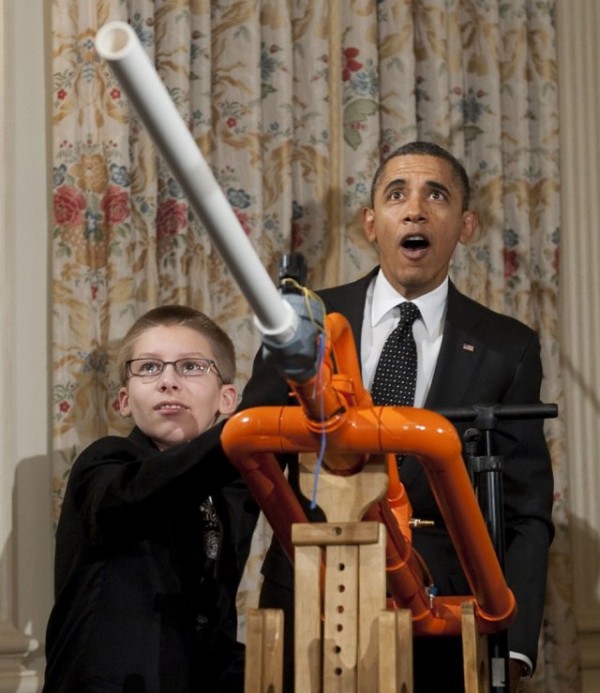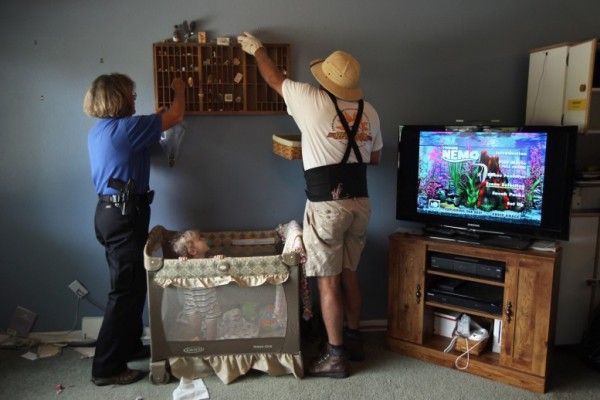Notes
Aranda’s World Press Photo of the Year: Pietàs and Burkas and Just Plain Obscurity, Oh My!
So, does it, or doesn’t it? Does Samuel Aranda’s 2011 World Press Photo of the Year, honoring the Arab Spring, too much resemble the Pietà?
Writing about the photo last October, Professor and Bag contributor, Robert Hariman, acknowledged a clear connection to the Pietà, but also warned about imposing an association that presented such a strong and contradictory set of terms, especially given the fact the two people in the photo are Muslim (and connected to a completely different artistic tradition). Hariman then tossed into the mix, as equal fair game, a connection between that black hooded figure and the angel of death.
As possibly too God-fearing a critic, Hariman did circle back to say that a view of the figures through the cultural lens of the Pietà “may frame profoundly appropriate responses” and “provide intense identification across cultural barriers to reach universal truths.” Immediately following, however, he ended up on the other bank again, saying that:
…transposing their experience into another culture’s symbolism can seriously distort the actual relationship of those in the photograph, while also suggesting a false universality on Christian terms precisely when one ought to be laying down such presumptions about how well people can understand one another on sight.
Hariman then concluded with a warning about symbols:
Thus, we need to see through symbols, but in both senses of the verb: to use them to see more than we might see otherwise, and to recognize and look past their limitations to see what they would distort or occlude.
According to my reading, while offering consolation to the “Pieta” yes votes, Hariman seemed to cash his chips with the suggestion Michelangelo and Company might be getting in the way.
Taking Hariman’s “occlusion warning” to heart, Bag’s contributor, Madeleine Corcoran, in an email exchange, was quick to acknowledge both sides of the “Pieta/Christian lens” argument (“critics of the photo saying ‘not again‘,” and others insisting “Christian imagery is being forced upon Arabic/Islamic content”). Moving closer to the content, however, Madeleine saw the exercise looking past the photo:
Both points are true. But there is something more unusual about the image: it has a different sensibility than the Renaissance style noted by critics.
The Christian imagery may clash with the content, but it doesn’t drag with it the rest of the baggage you would associate with “religified” images of suffering. The bare style, the off-centered framing of the pair stop this suffering from becoming glorious or romantic. There’s something loose about it. To add to this contrast, the aesthetic is modernist. It has a dreamlike, surreal quality that speaks of an inner psychology rupturing through to the surface. The faces, swallowed by darkness, the strangeness of the white-gloved hands, the muscular shapes of the jaw and arms: it is an aesthetic that is current and interesting. The angles and shadows are almost cubist. It reminds me of a Francis Bacon portrait in its twisting expressiveness.
Corcoran then went on to consider the photo in terms of another set of critiques, involving thematic intent, and cultural and gender stereotypes.
Q. So what does the image tell us about the stereotyping of women, and how true it is to the photo’s stated focus, the Arab Spring?
Critics are anxious about the stereotypical presentation of the ‘Arab Woman’ – burkha clad, offering comfort to the man. Yes, the stereotype is there. And critics are also right that this does not reflect the ways in which women engaged in and drove the revolution on the ground. On the other hand, the woman looks strong, her grip is fierce. She defines the man’s body. He is an exposed body, she is a force. This is an unusual dynamic and one which makes the woman powerful. Her grip conveys much about the bonds that tie people together and allow people to retain their identity in the midst of turmoil, trauma, and revolution.
Q. But, being as personal as it is, is the photo more reductive than representative of the uprising?
I don’t think so. It’s an insight, a gripping and gripped moment. The body is political ground.
For myself, as someone who takes a more secular, and a more pragmatically elemental approach to reading pictures, what causes me to sidestep the religious occlusion and make a more earthbound and political connection to the photo (besides the way the light — and that perforation in the wall — helps me imagine the protests just beyond) are those gloves. So strong is the polyethylene to me, I skip right past “Virgin mother,” “burka,” and even “relative” to the grimy, bloody urgency and immediacy of triage.
(photo: Samuel Aranda/The New York Times)



Reactions
Comments Powered by Disqus